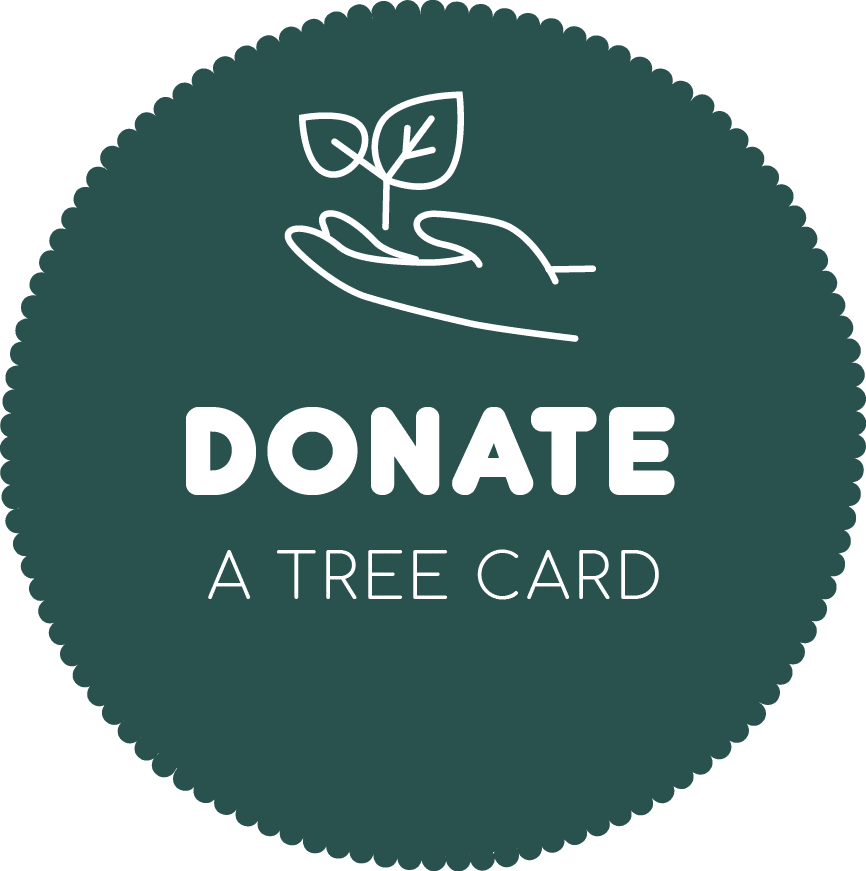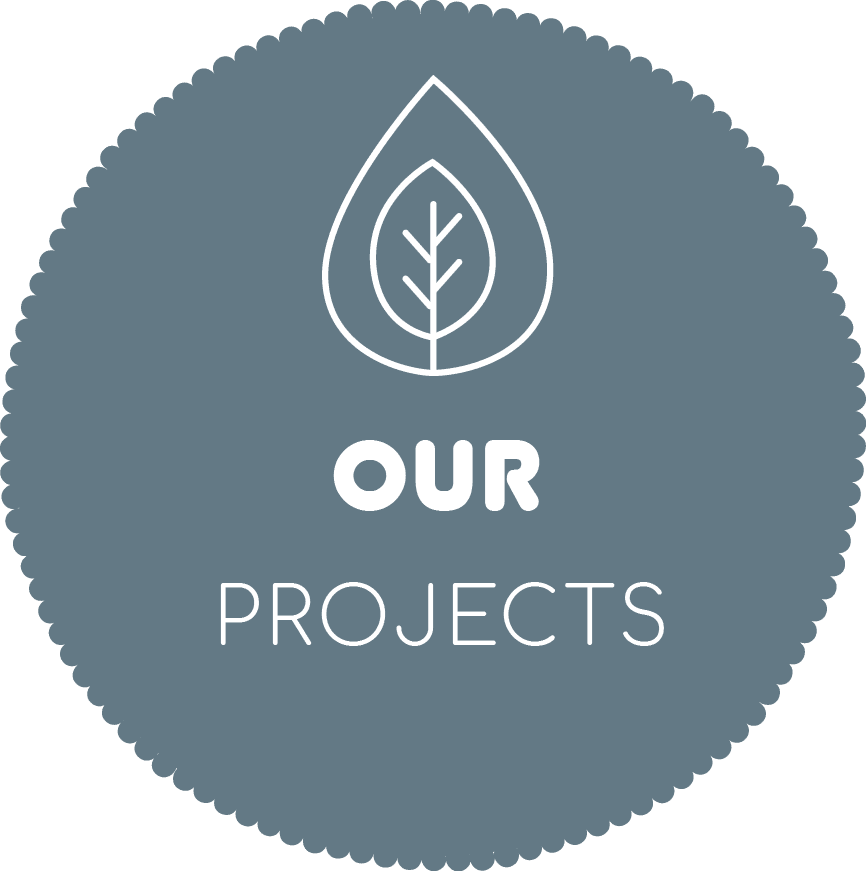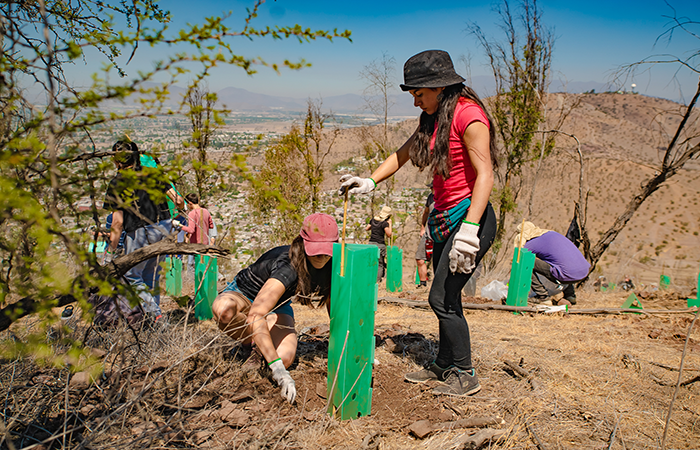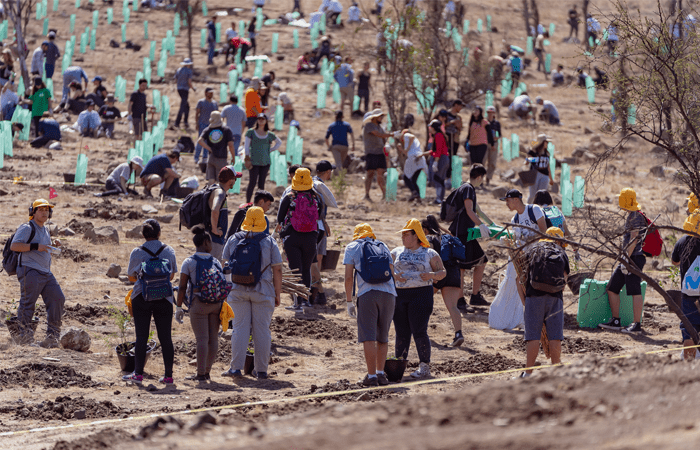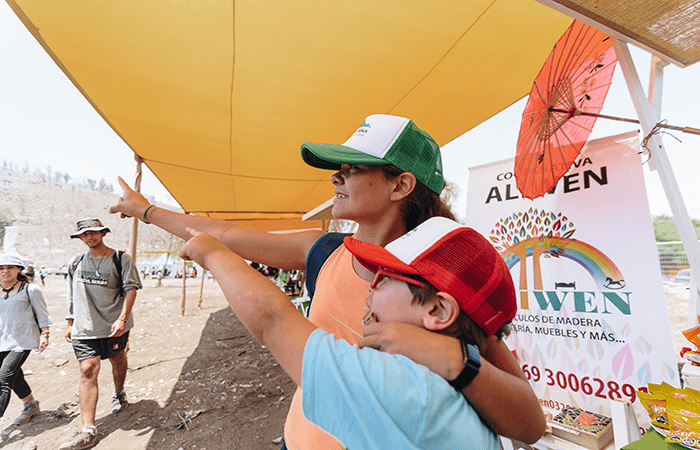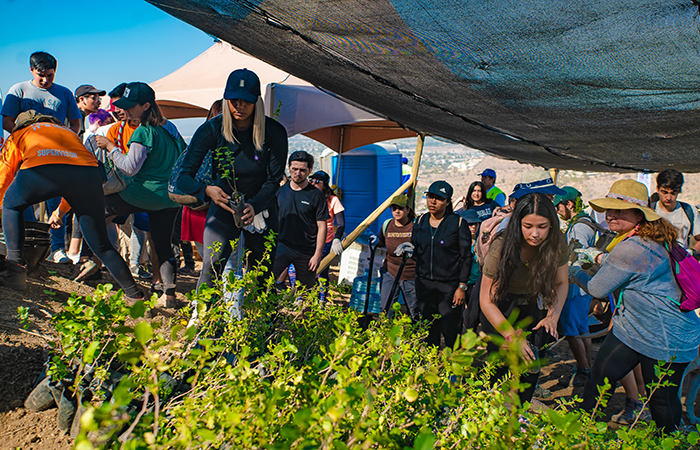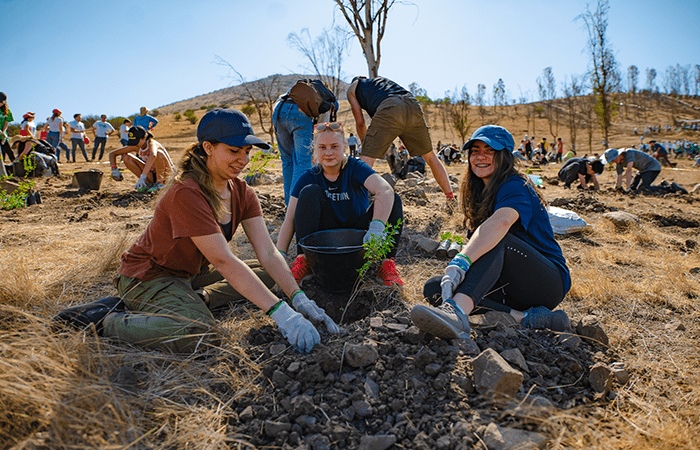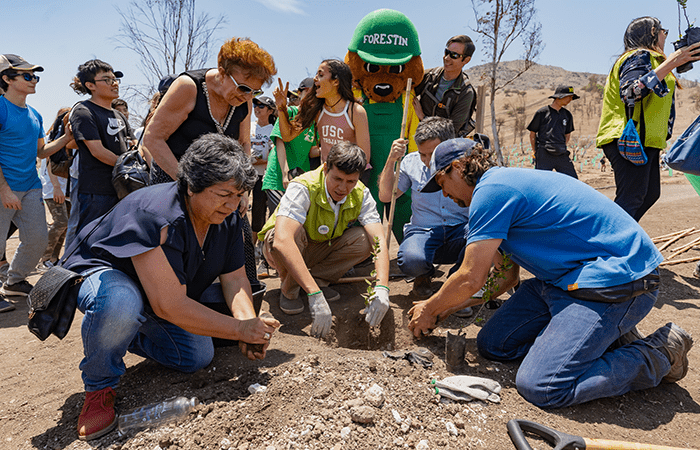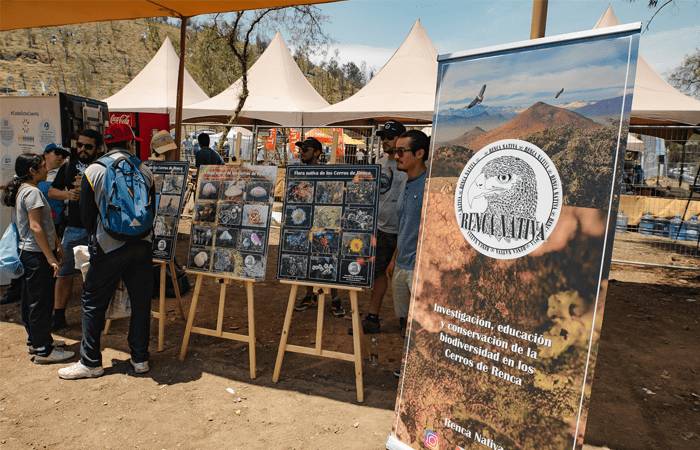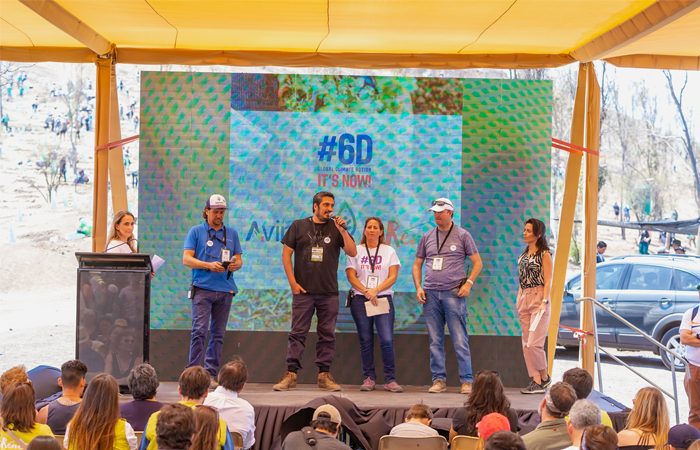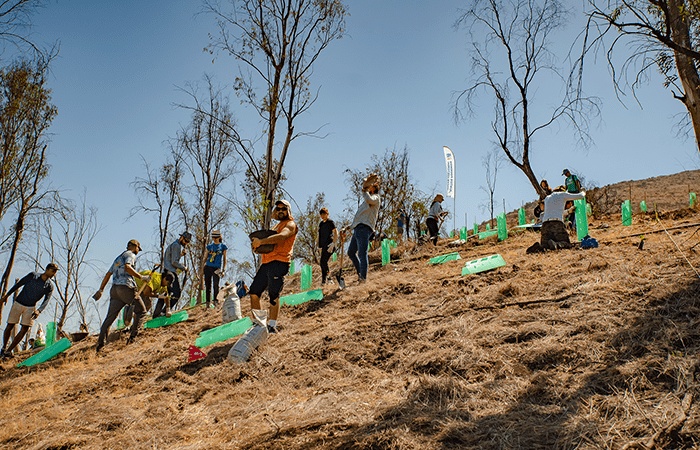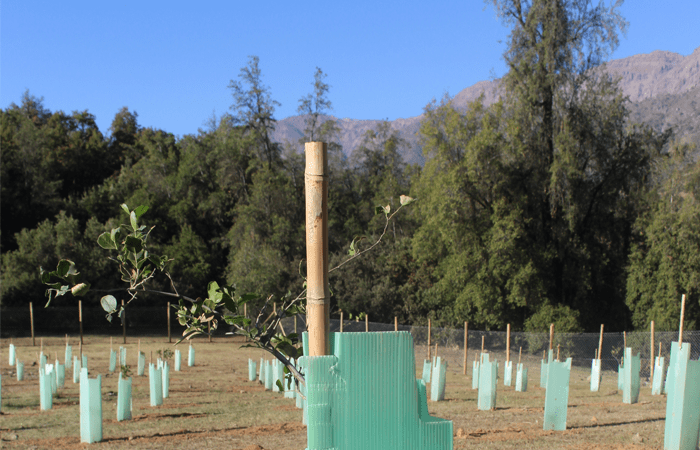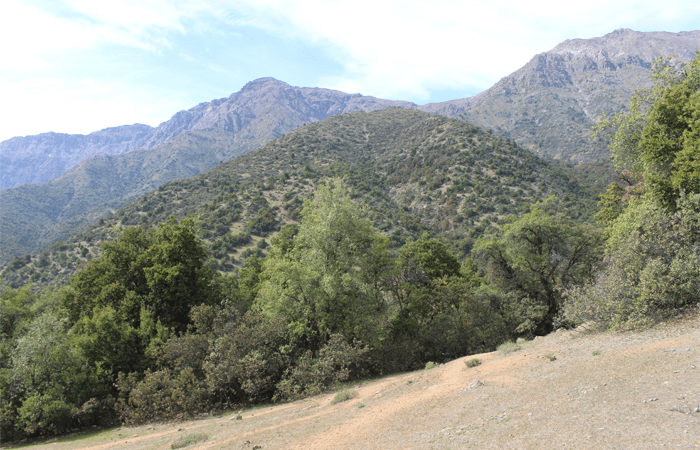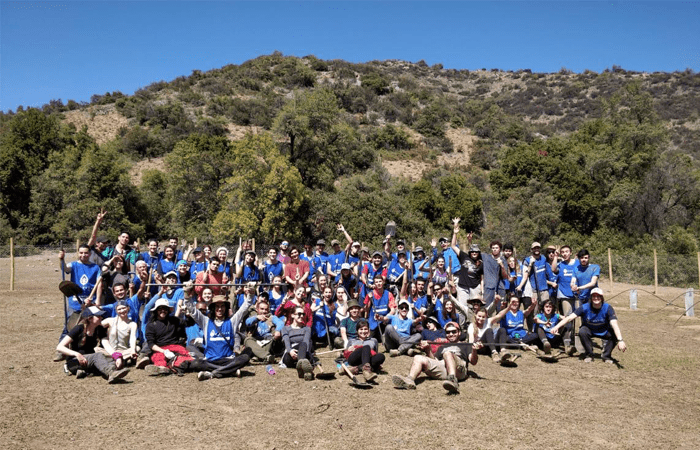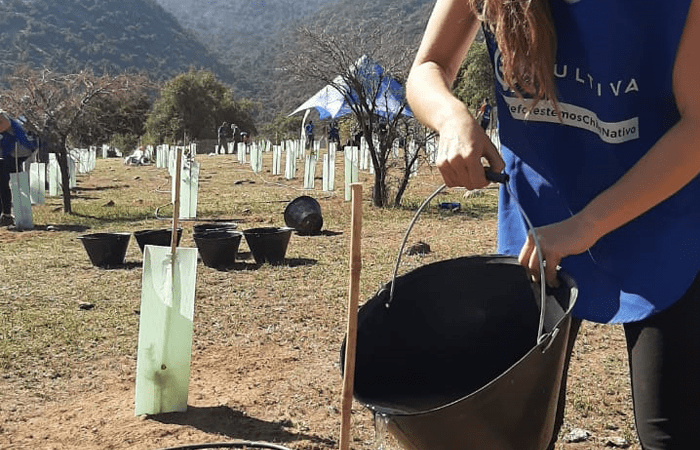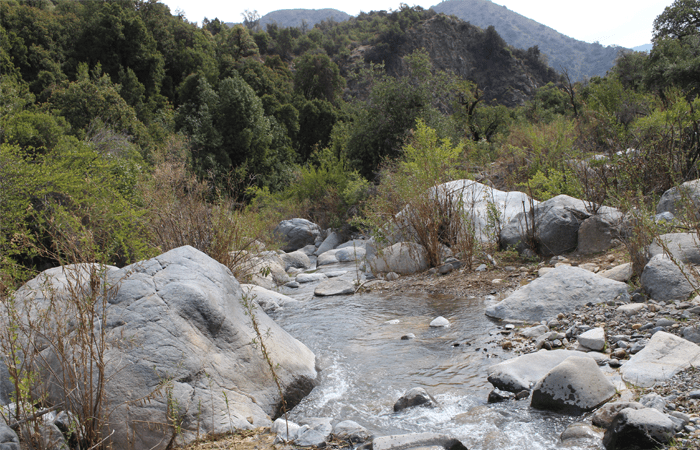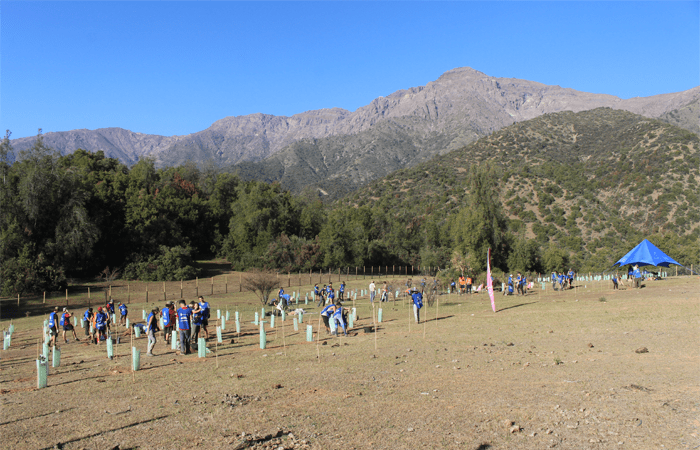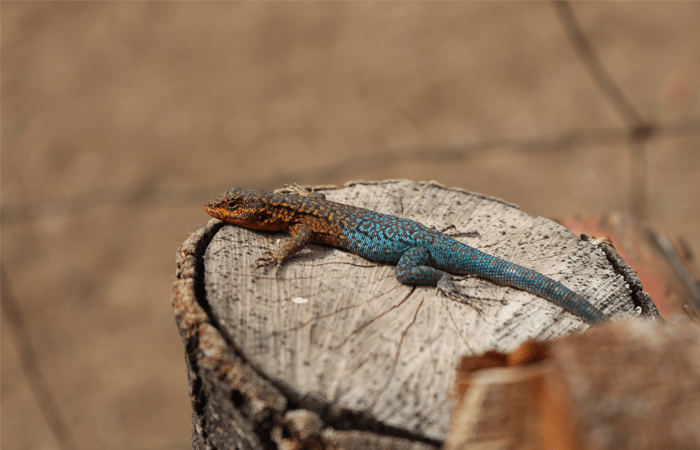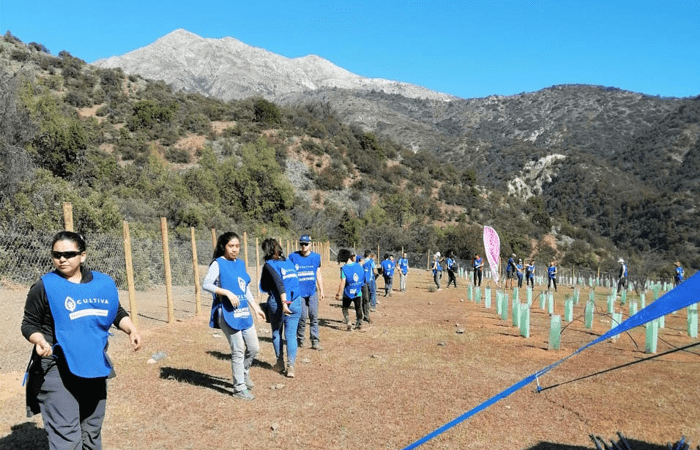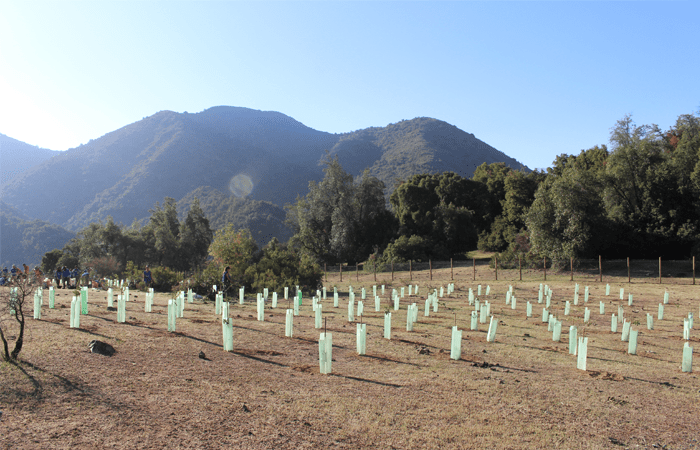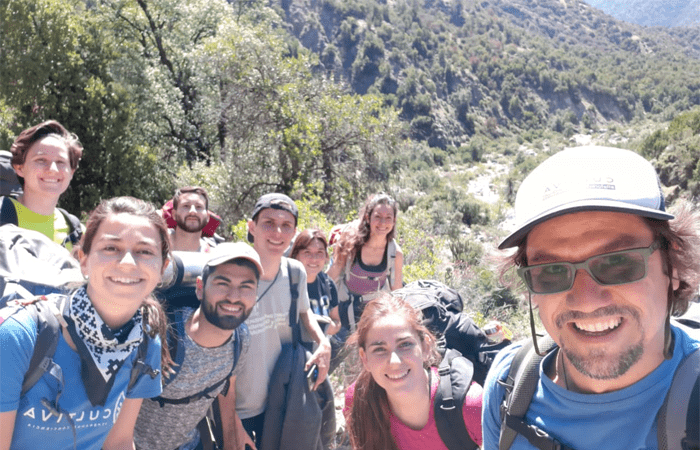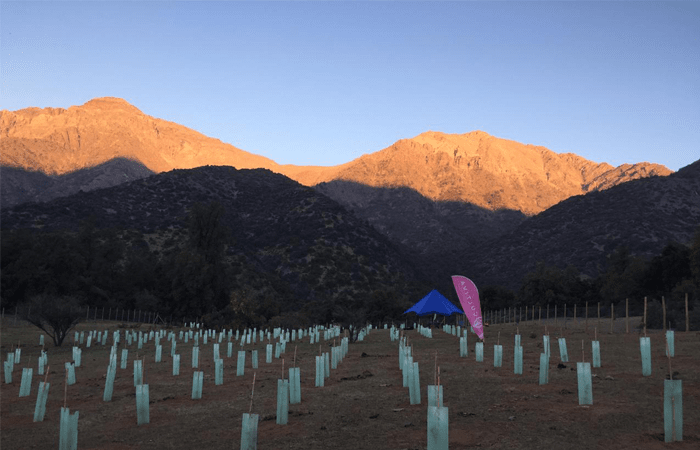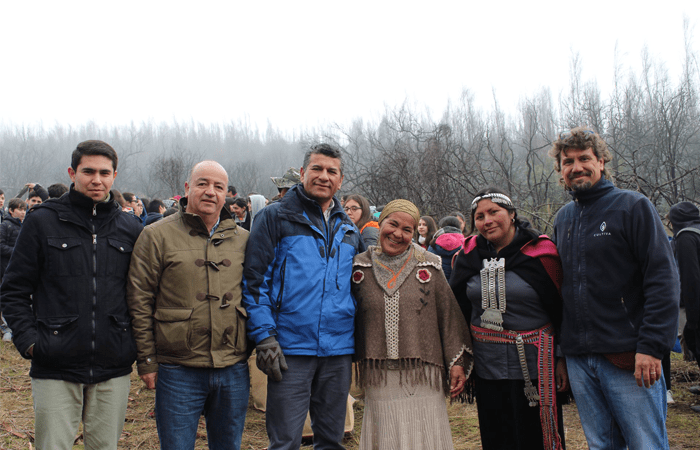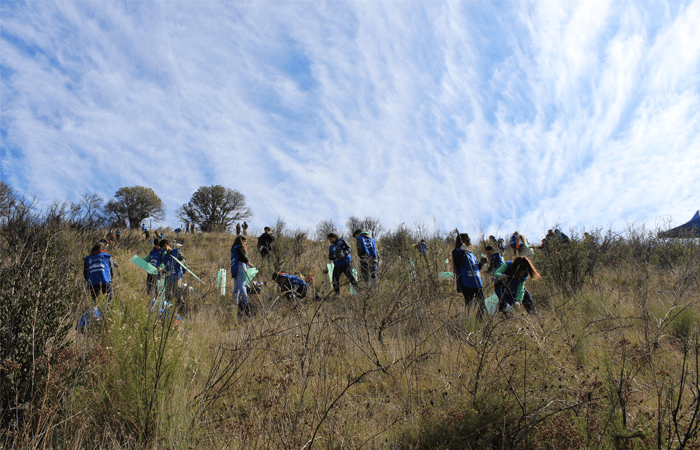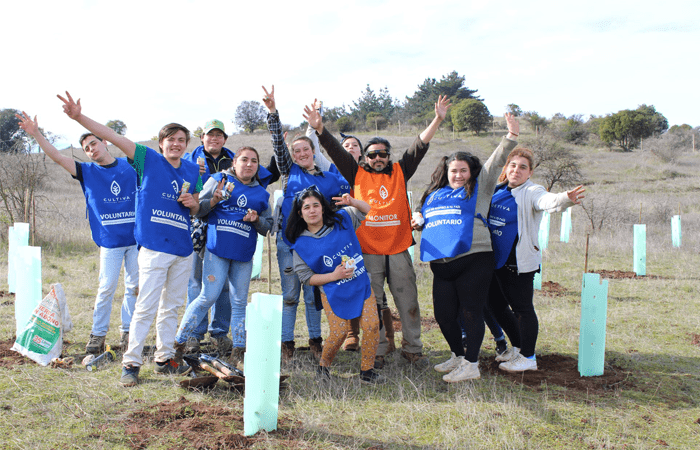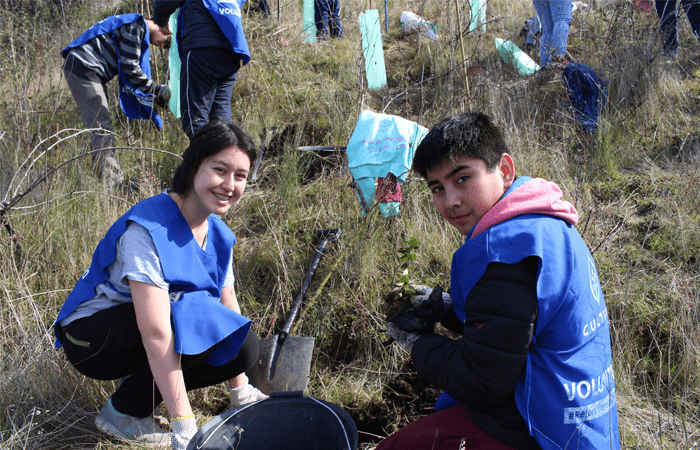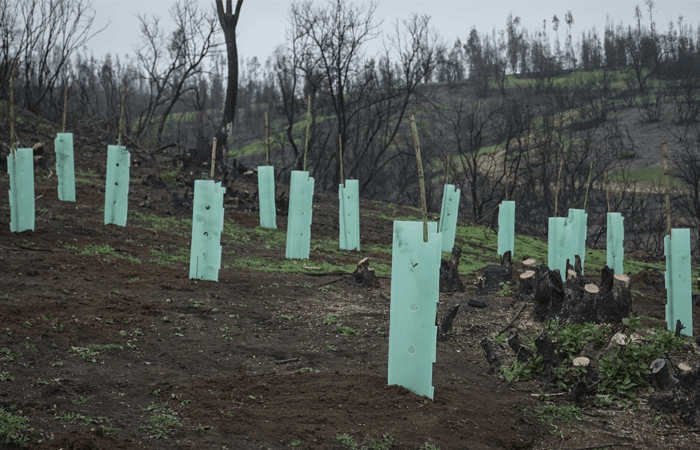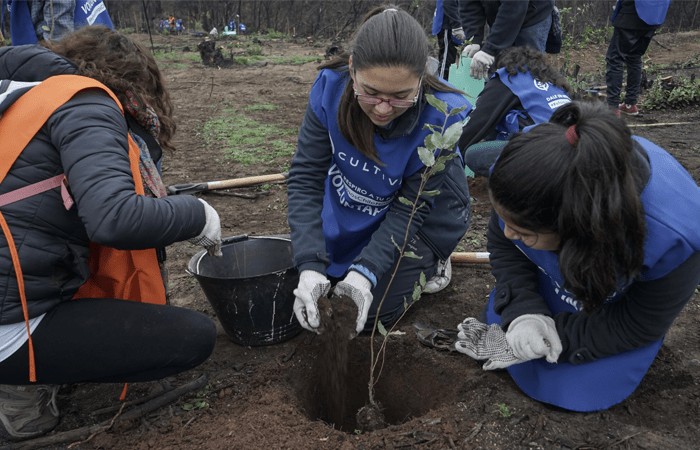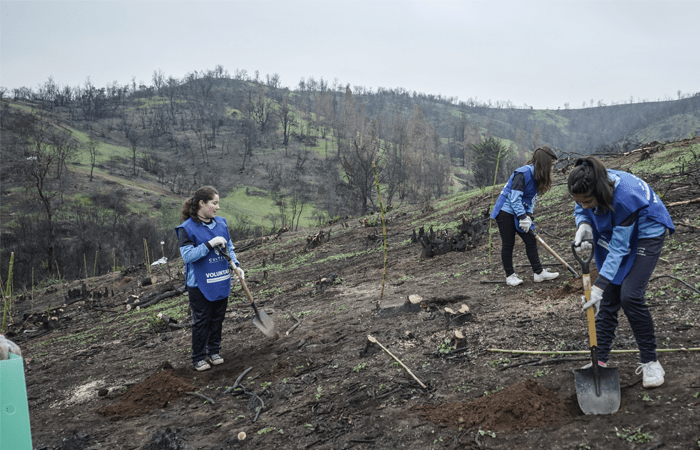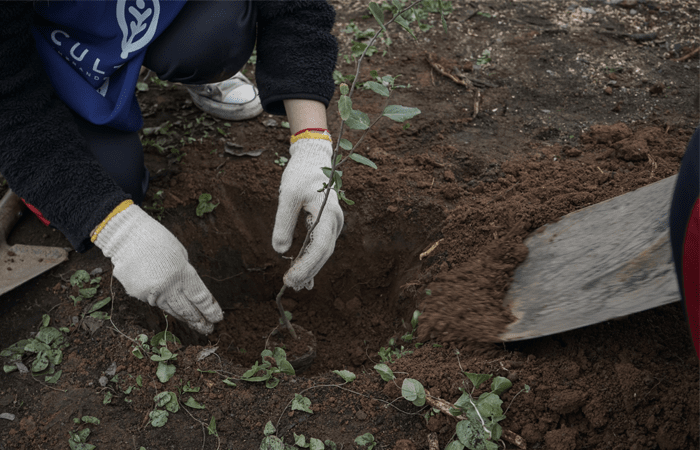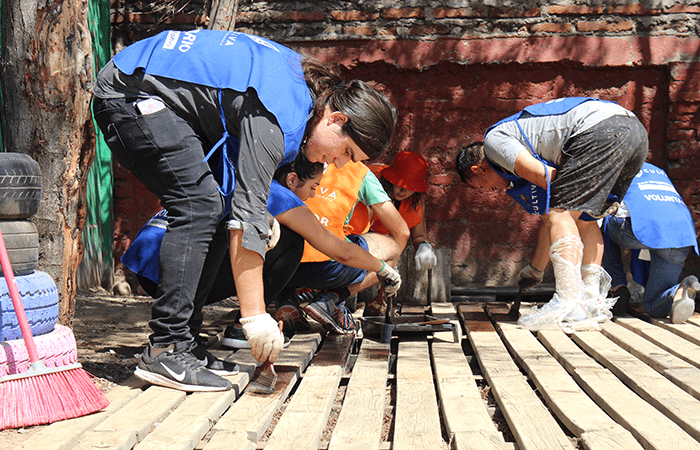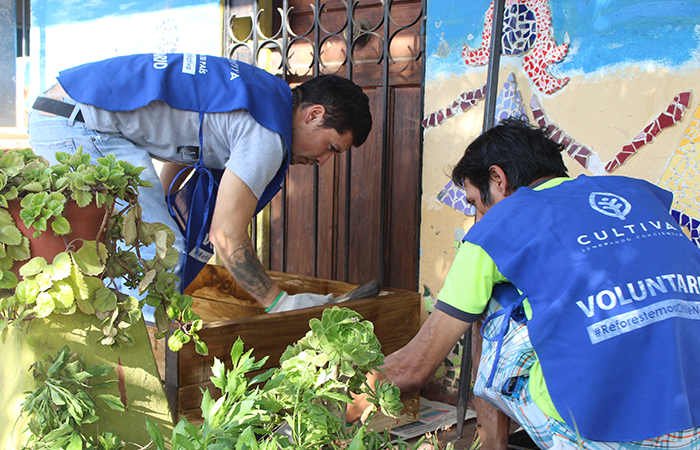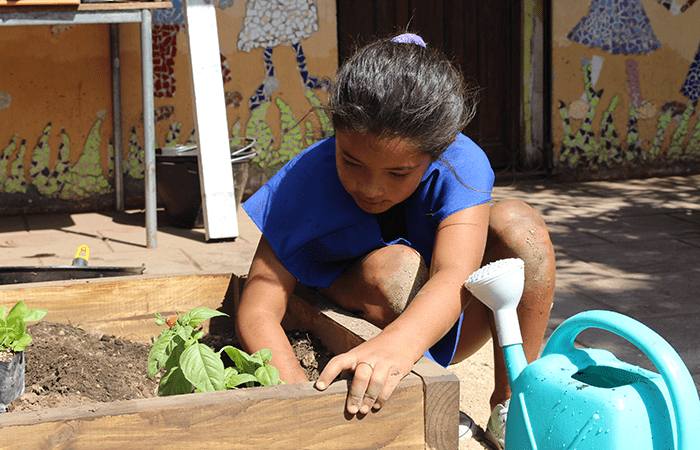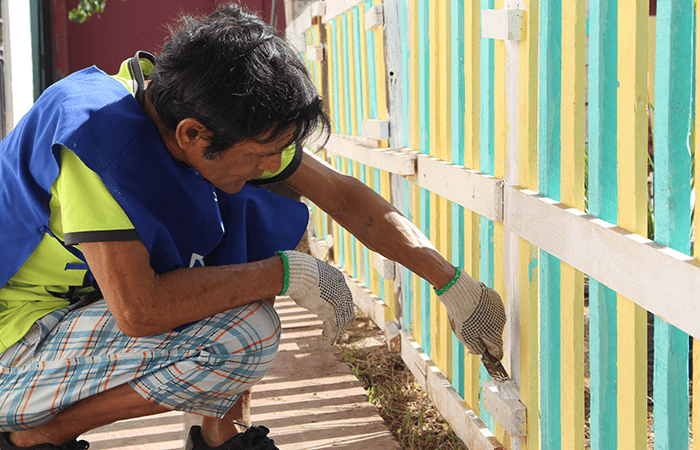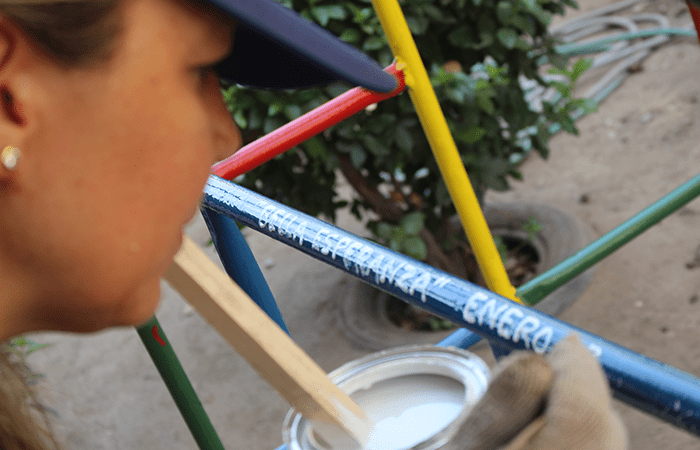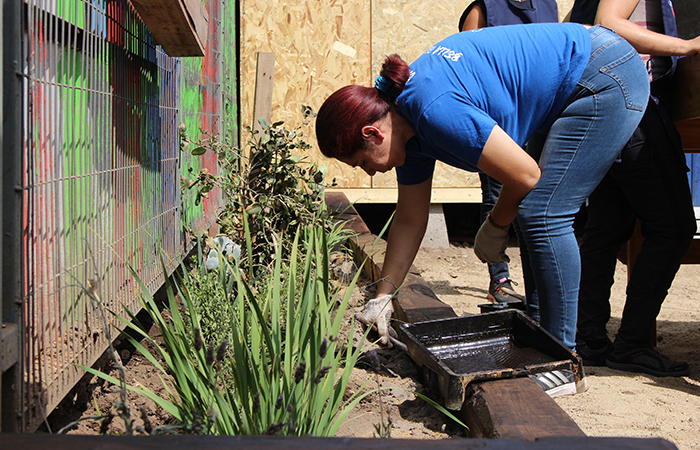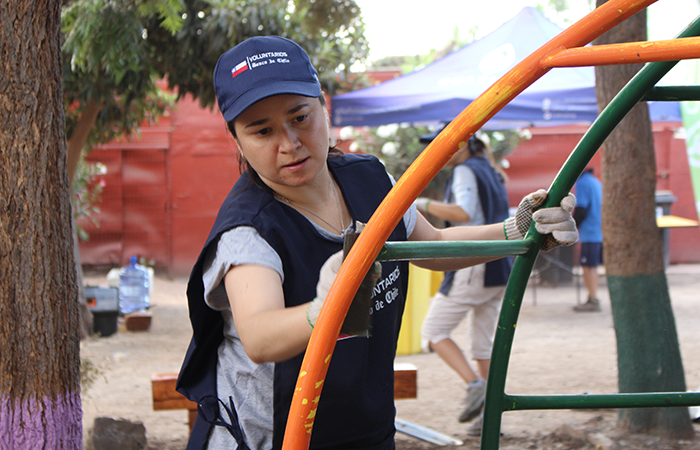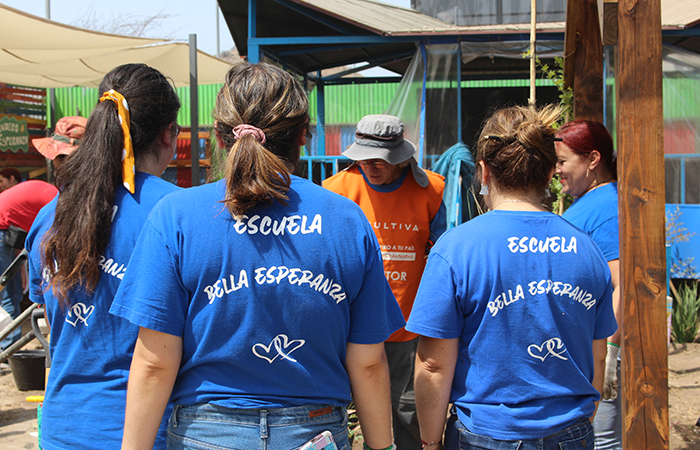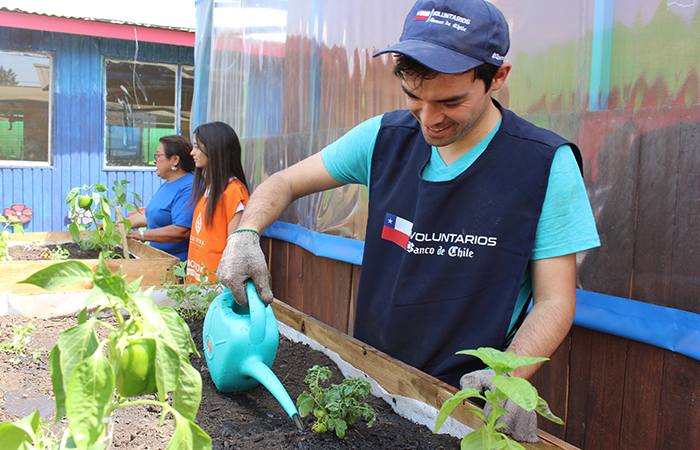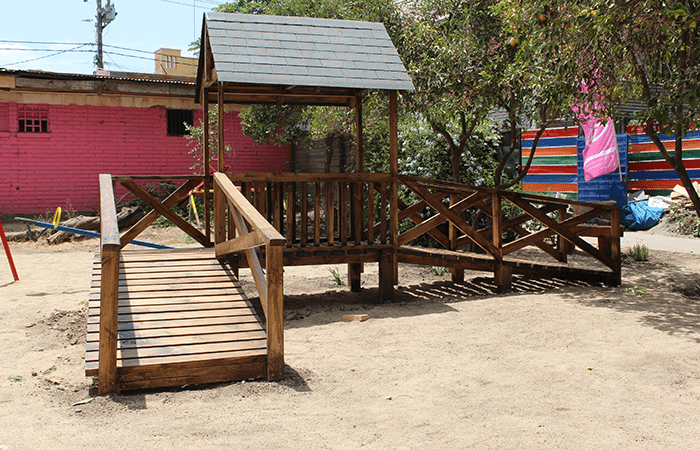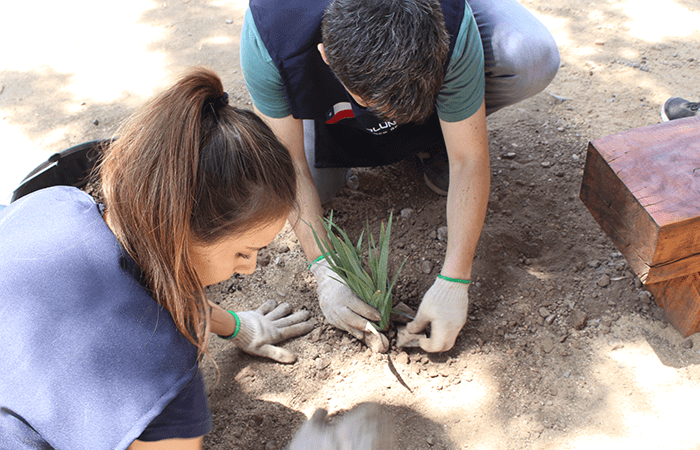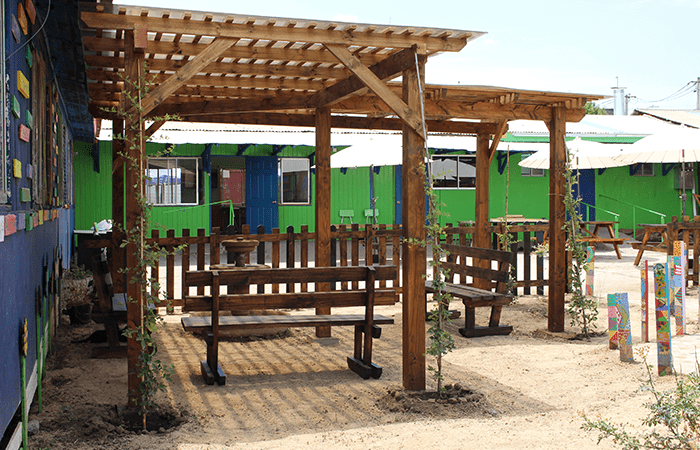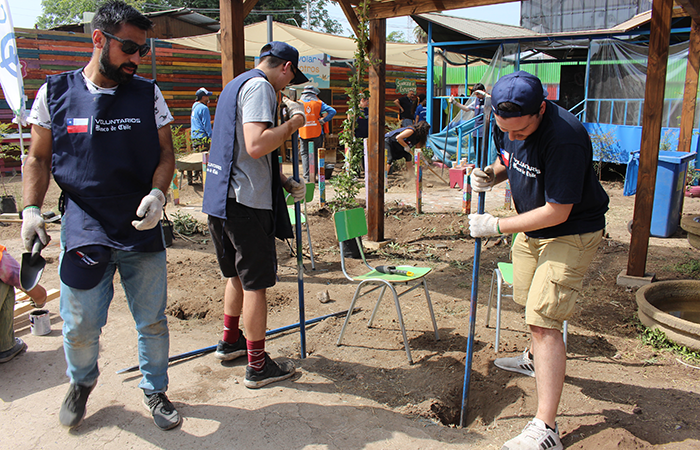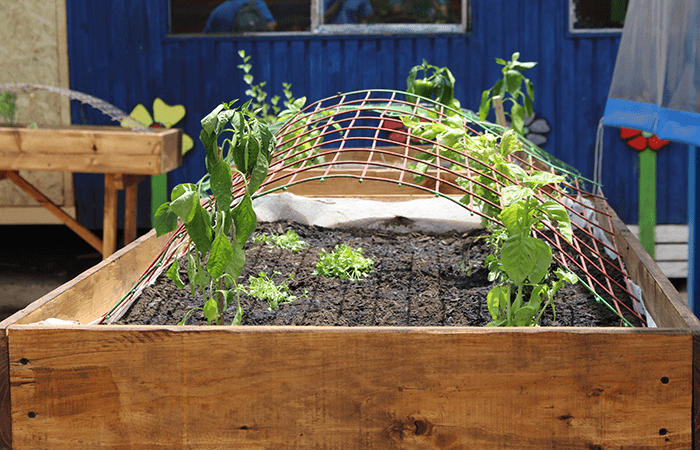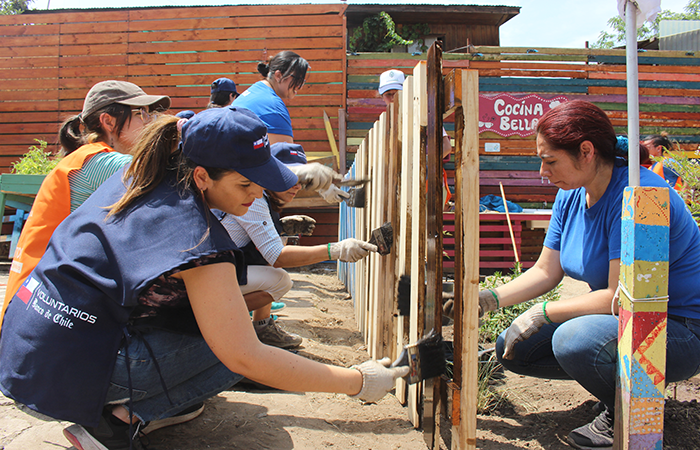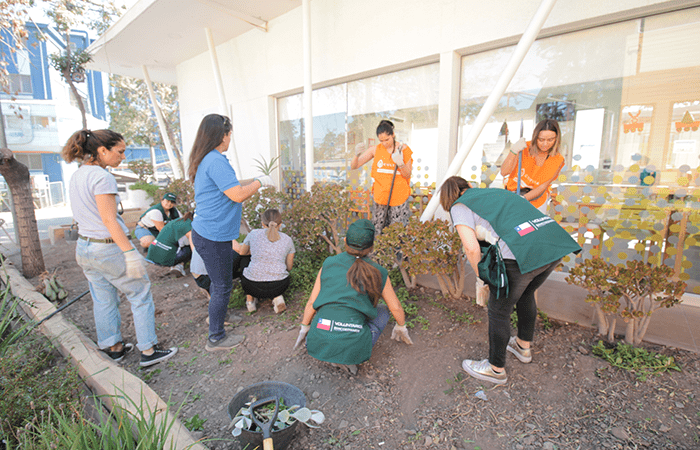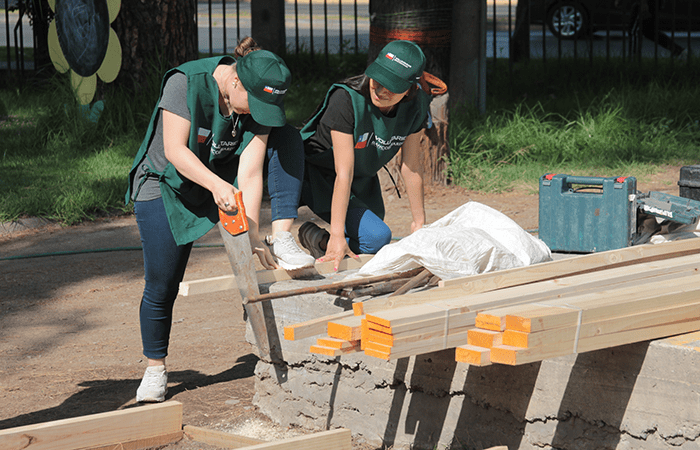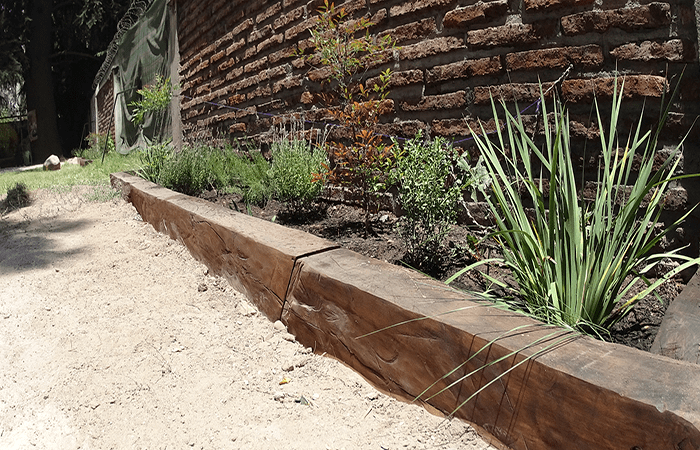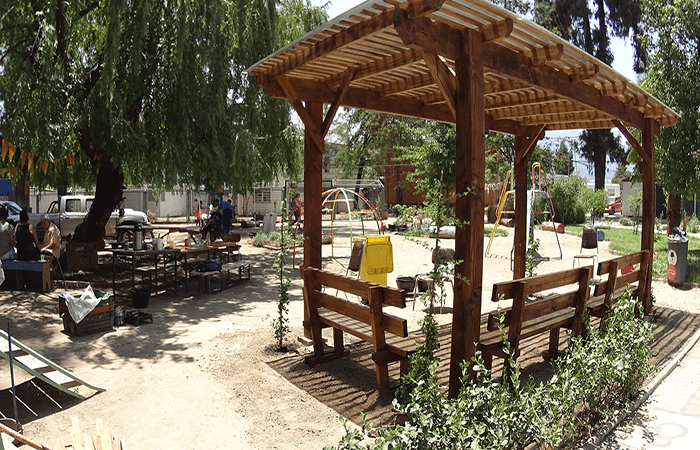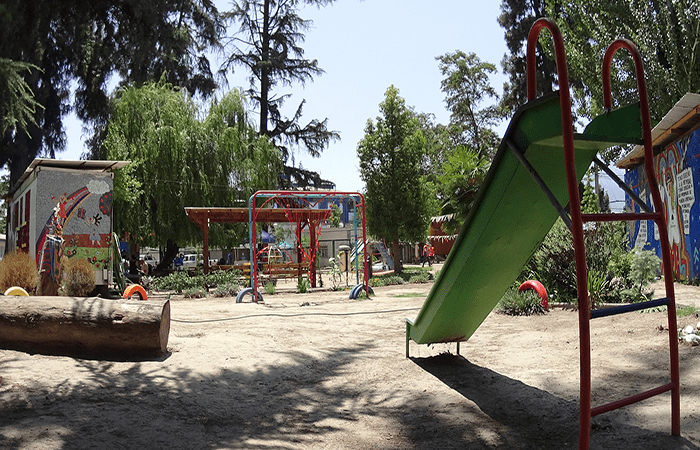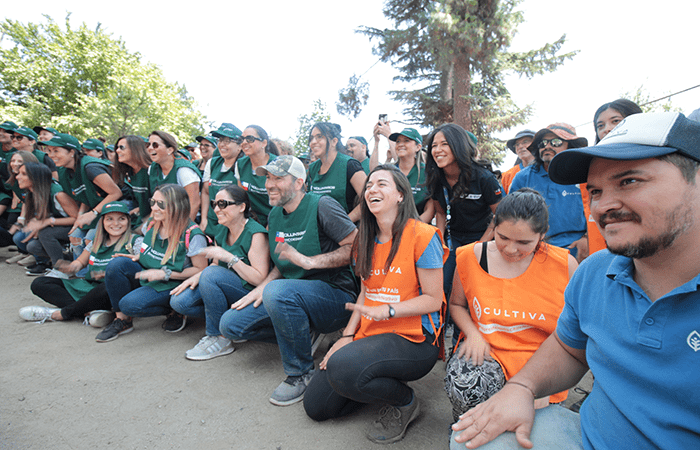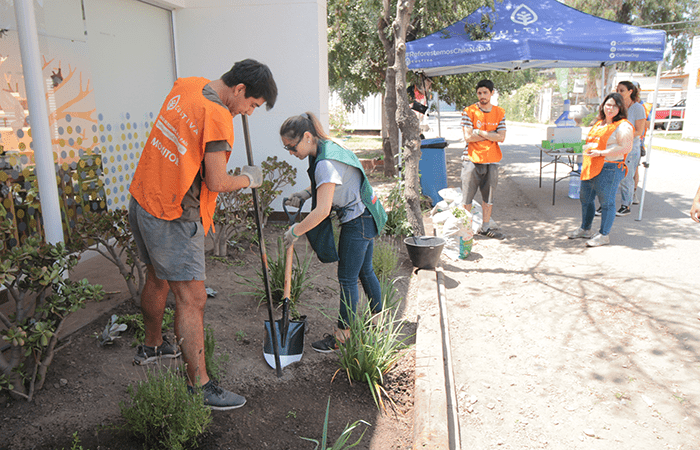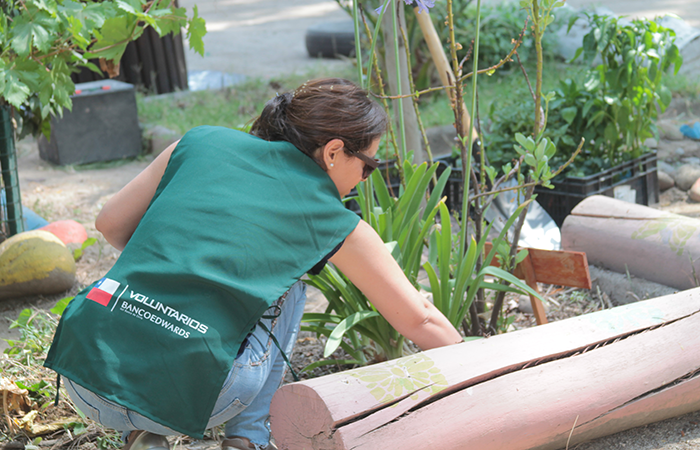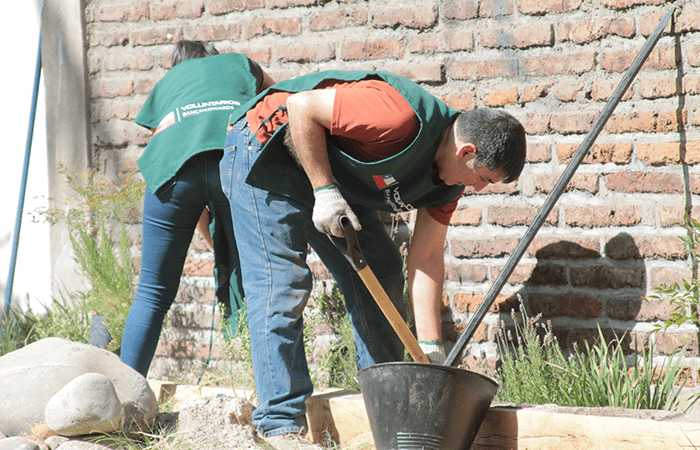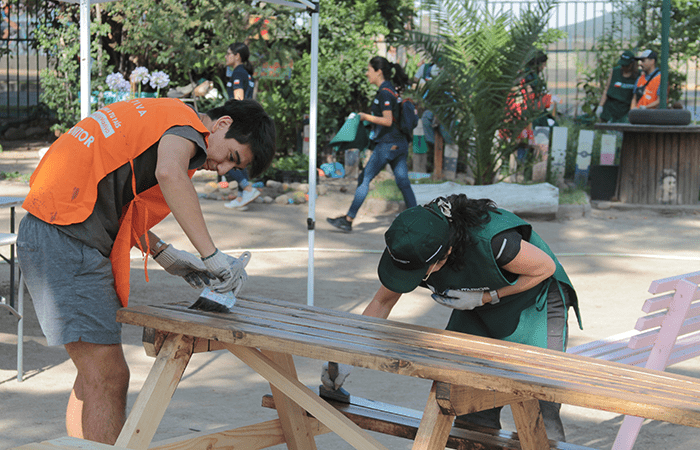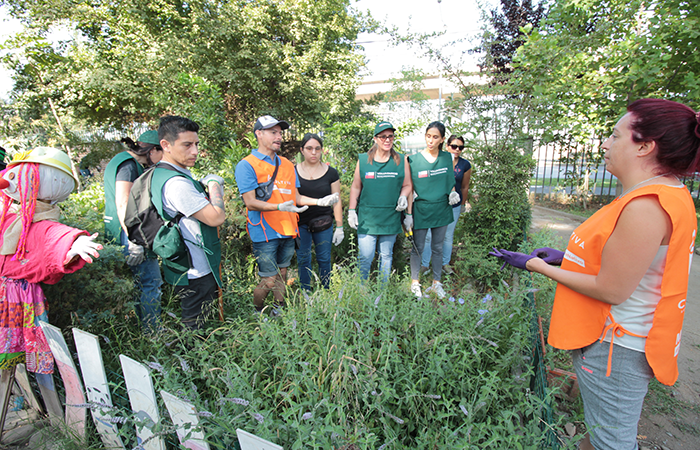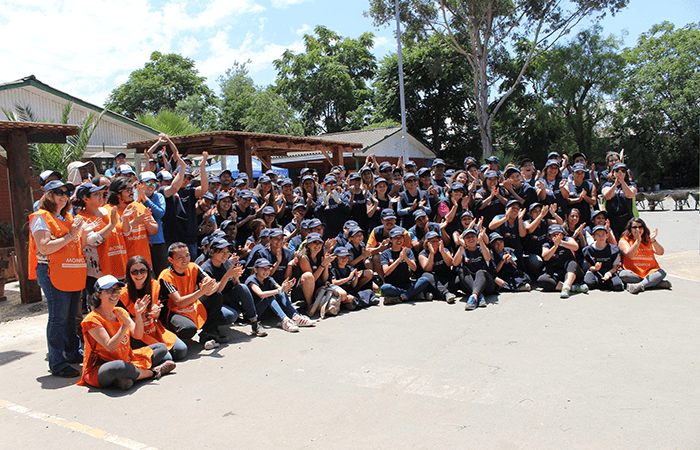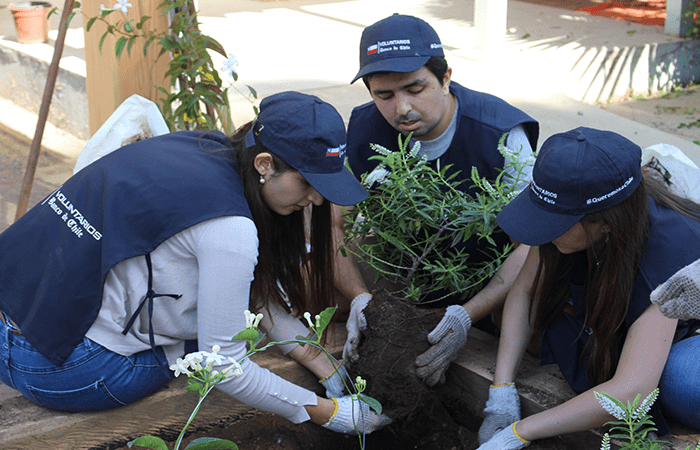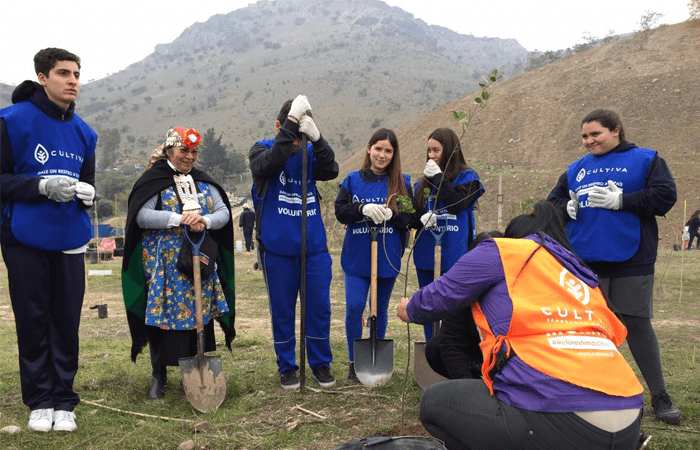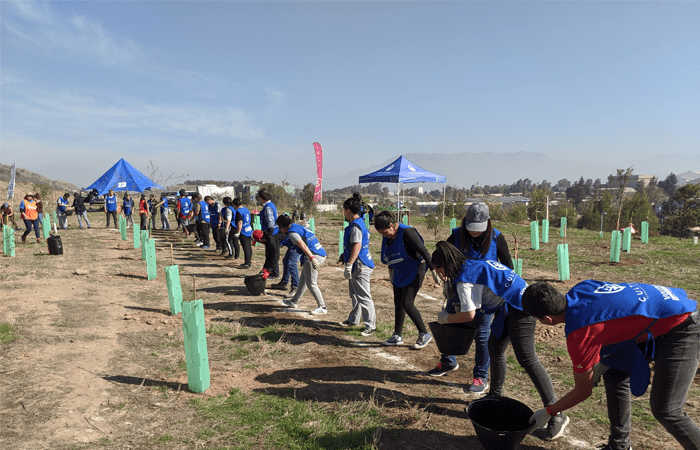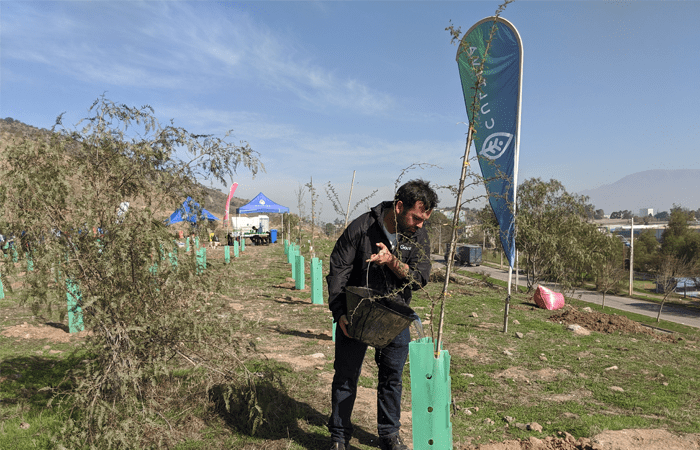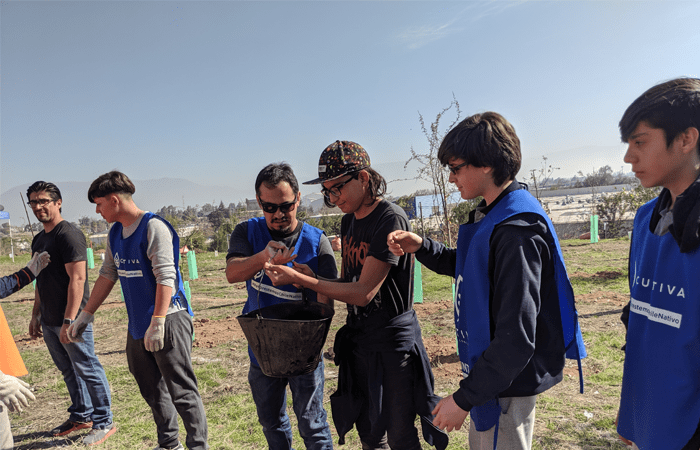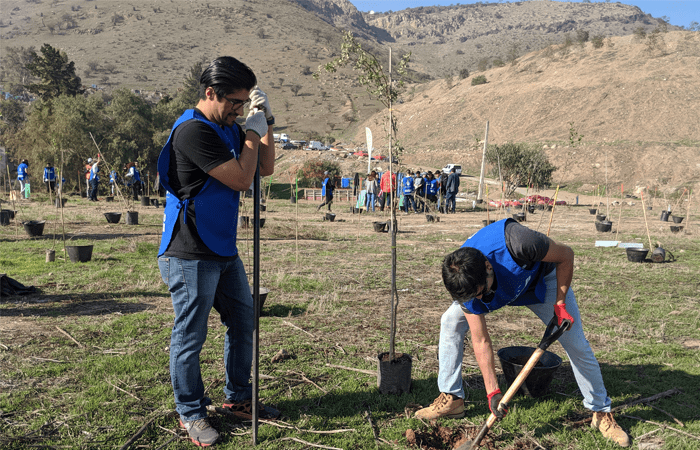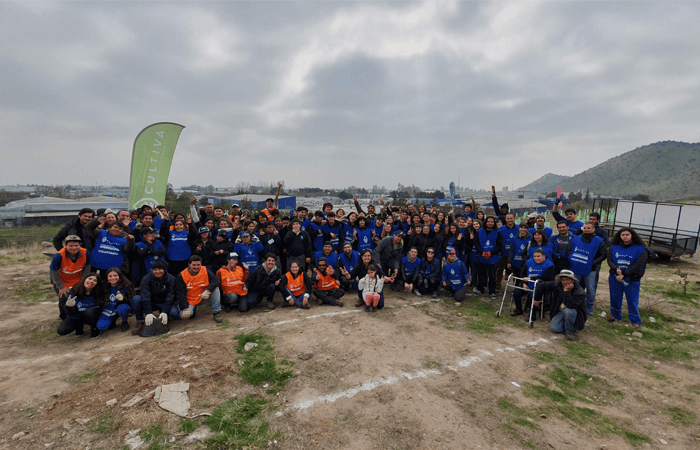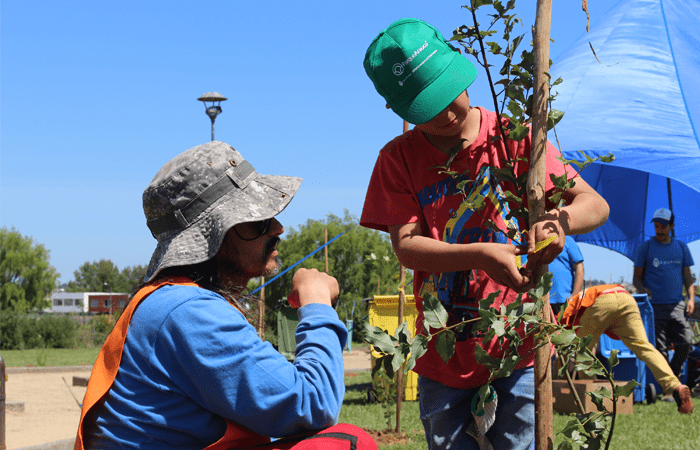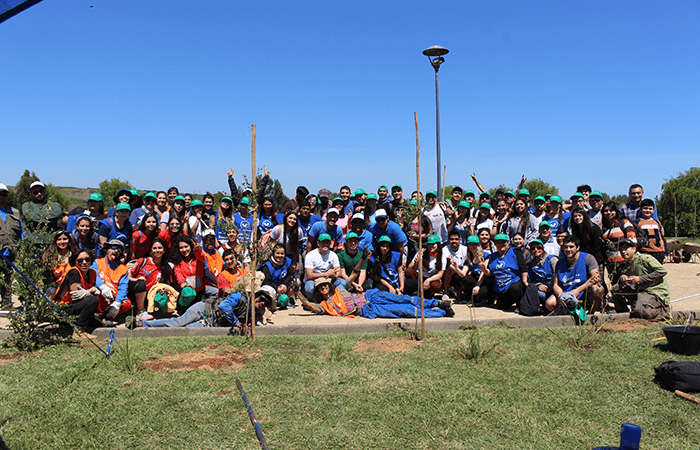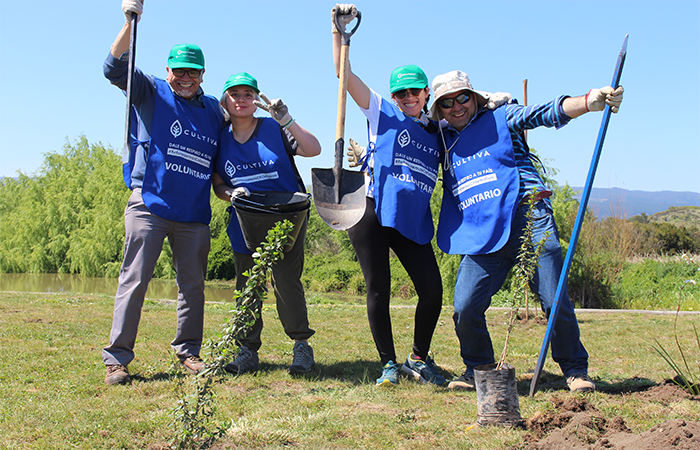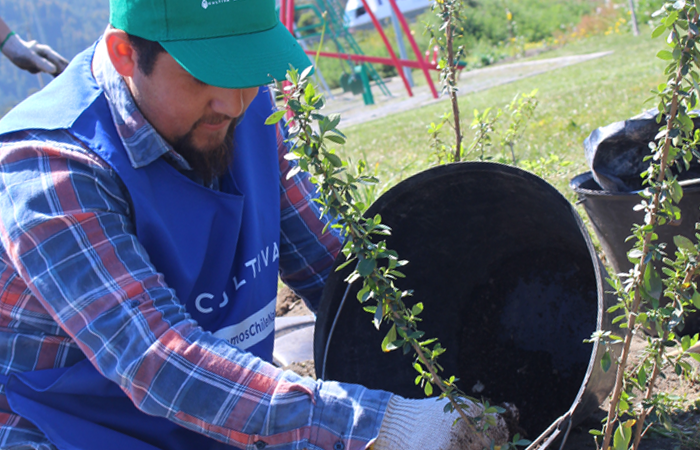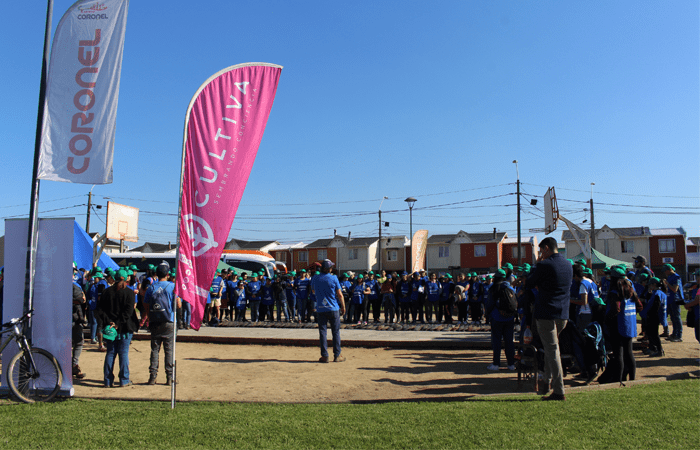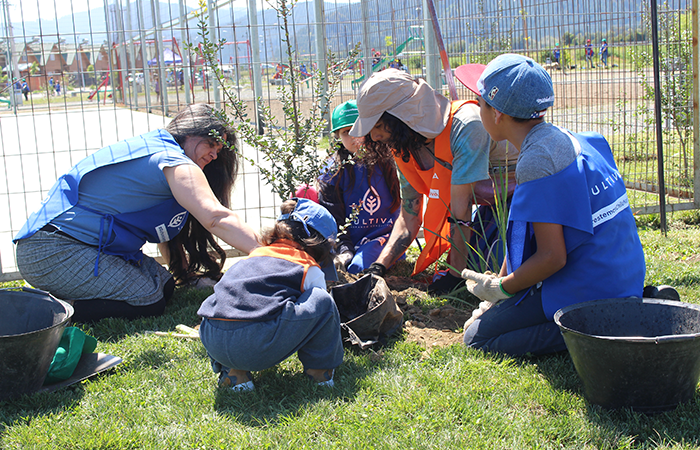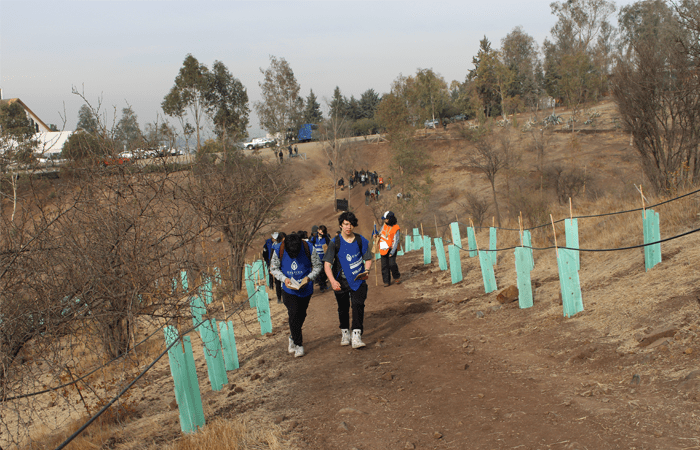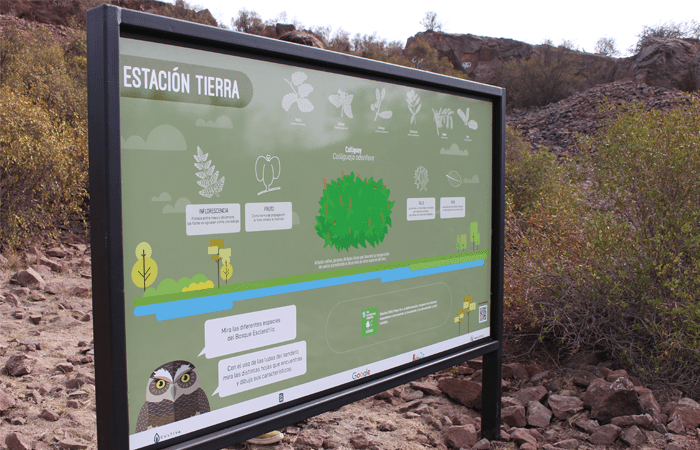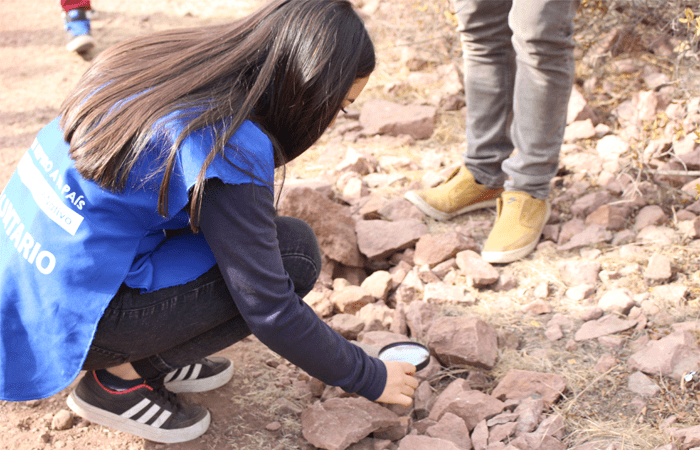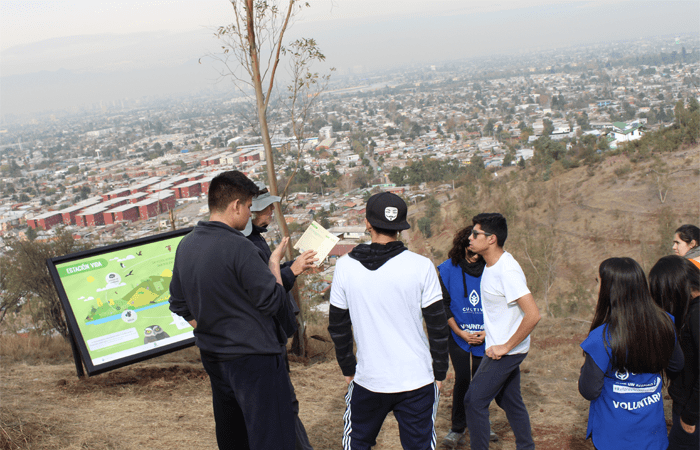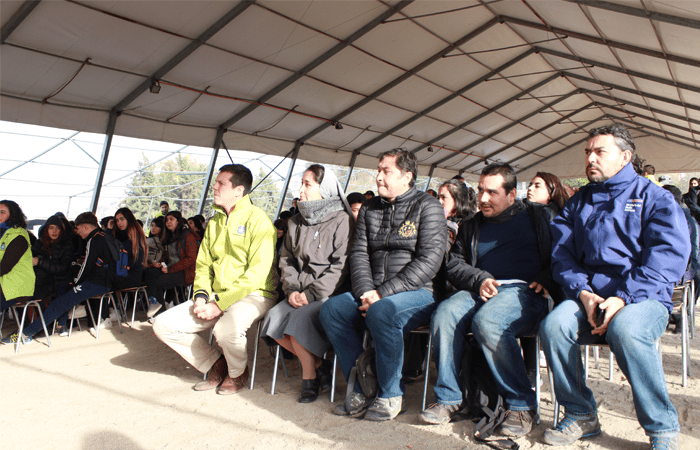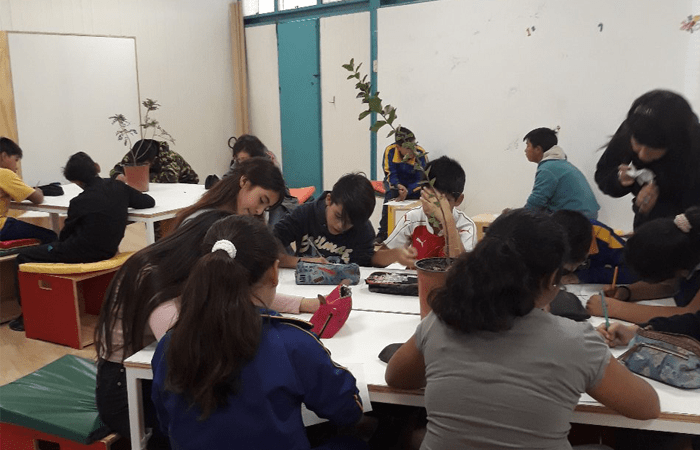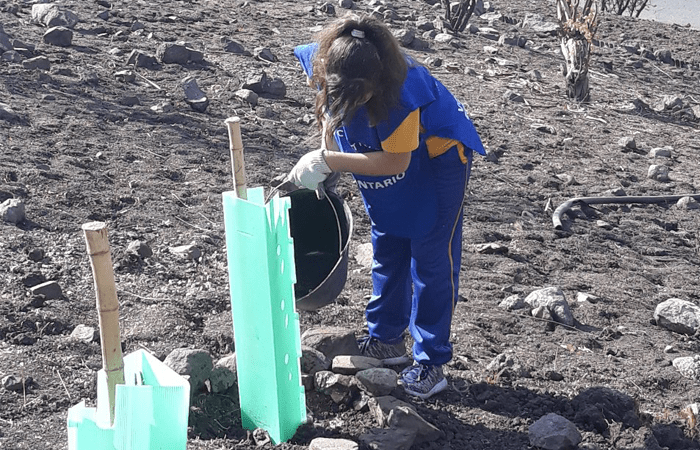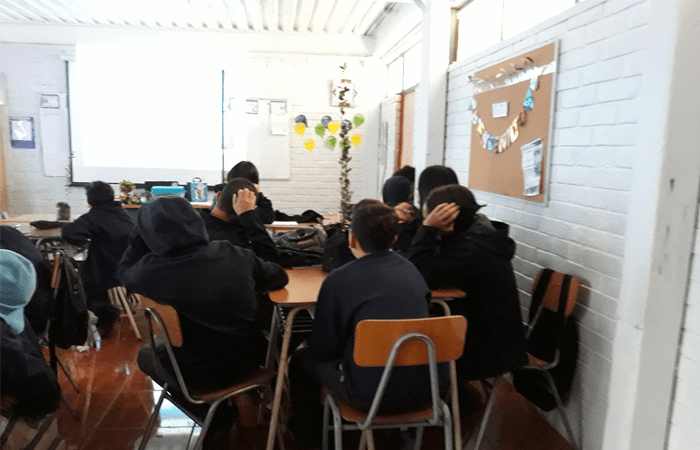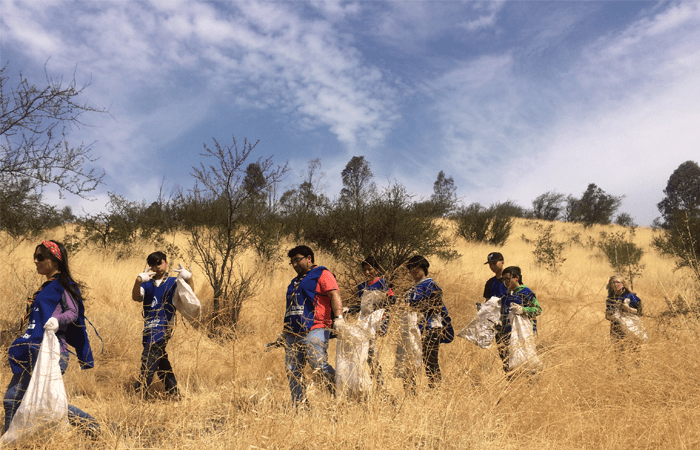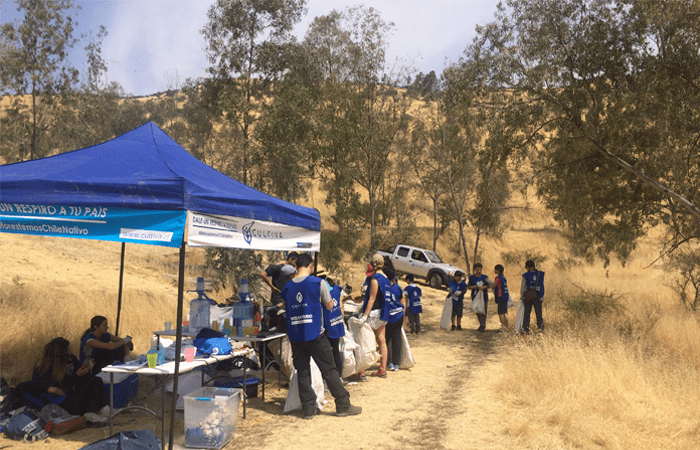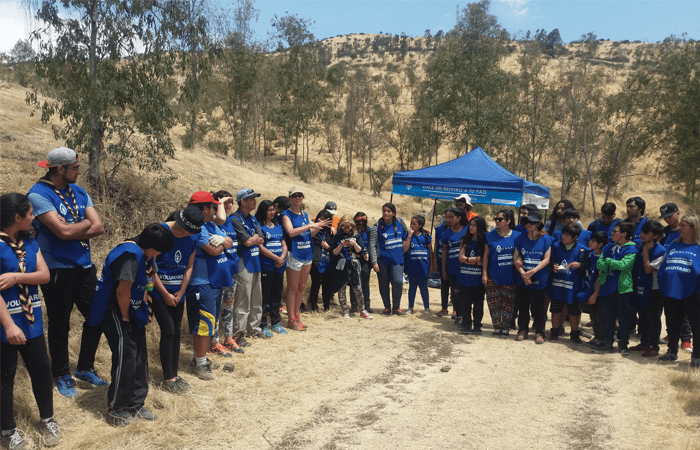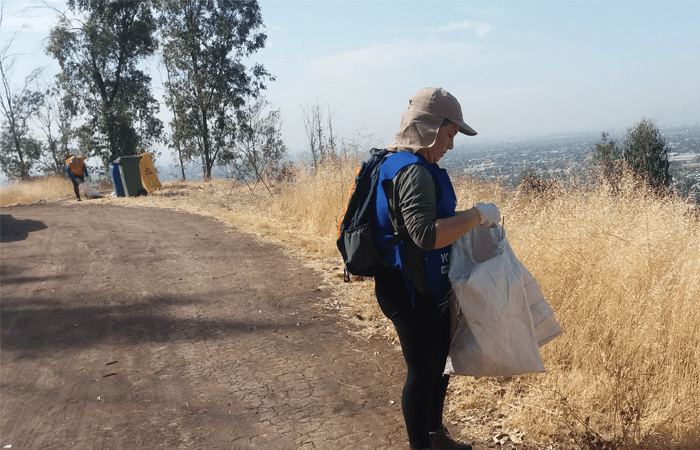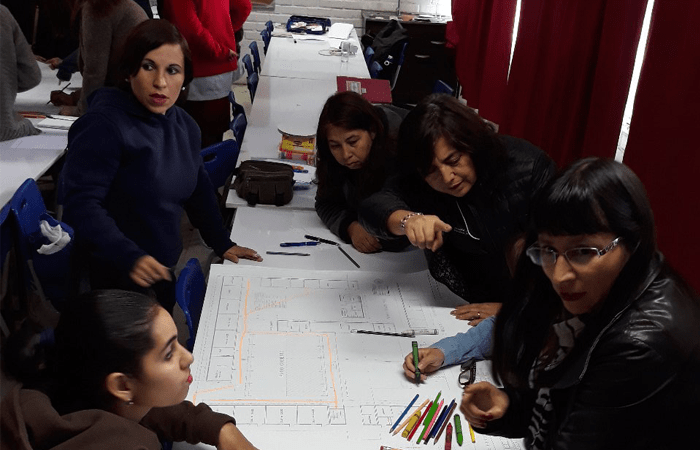Projects
- Participatory Reforestation
- Eco-participatory Spaces
- Community Urban Transformations
- Social-Environmental Education
Hills of Renca Park Reforestation: First 6D Event
It was a participatory reforestation project in collaboration with the Avina Foundation and the Municipality of Renca. The aim of this project was to reforest 15.000 native trees with 5.000 volunteers to fight against climate change. This project also wanted to bring territorial justice to the northwestern part of Santiago, where there is a lack of green spaces and vegetation.
The project was carried out in December 2019. It was the first landmark in terms of reforestation, and there is a second project planned for the second semester of 2020.
This project was part of the global climate change campaign called “It’s Now”. Its aim was to generate coalitions of climate activism in the world during COP25, in order to increase the ambition within the decision making of climate issues, by the members of the Conference.
The Cerros de Renca Park has a master plan designed in collaboration with more than 7.000 inhabitants of the community. It will benefit more than 1 million people in Renca and surrounding districts.
The reforestation project considers the maintenance and watering for 5 years. By the end period, it is planned to have contributed 30 hectares of native vegetation. Also, a tree survival rate of more than 85% of trees is expected.
We hoped we have contributed a place for the community of Santiago, so they can enjoy and learn about Chilean native forest and the benefits it has against climate change and other environmental problems.
| Participants | 5 thousand |
| Surface | 15 ha |
| Native trees and shrubs | 15 thousand |
| Survival rate | 92% |
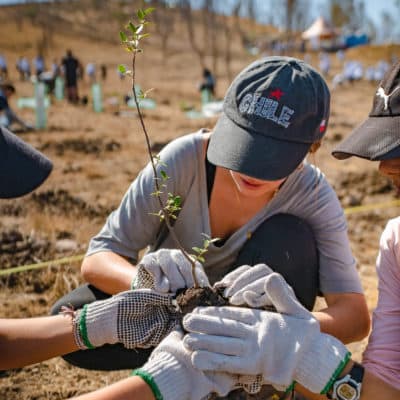
Hills of Renca Park Reforestation: First 6D Event

TNC Water Fund - Río Clarillo National Reserve
In September 2019, Cultiva in collaboration with The Nature Conservancy and Coca-Cola System worked together as part of the Water Fund project. It was the first participatory reforestation project carried out in a protected area of the Río Clarillo National Reserve.
A group of 65 volunteers went on a 3.5-hour hike from the National Reserve to the Mesa del Horno sector, where they planted 370 native trees of different types: Quillay, Litre, Peumo and Maitén. The volunteers stayed at the base camp, and the next day they watered the trees for the first time and installed the irrigation system.
| Native Trees | 370 |
| Participants | 65 |
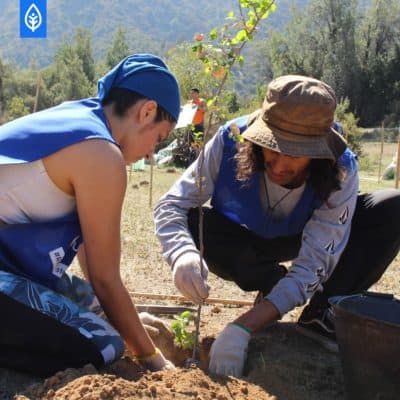
TNC Water Fund - Río Clarillo National Reserve

Reforestemos Chile Nativo: San Nicolás, Región de Ñuble
It was the first native reforestation project in the Ñuble Region and it was designed in collaboration with the Municipality of San Nicolás. It aimed to support the project to become the first agroecological district of Chile.
This project was carried out in small properties owned by people who saved their houses from the firestorms by native trees, which they were recovered in the reforestation.
In August 2018, more than 350 volunteers participated in this project. They were a diverse group of students from primary schools, high schools, universities and corporate volunteering groups. Together, they planted more than 1240 native trees for the community.
The project was funded by two companies: Pichara and Bank of Chile.
| Participants | 355 |
| Native trees | 1243 |
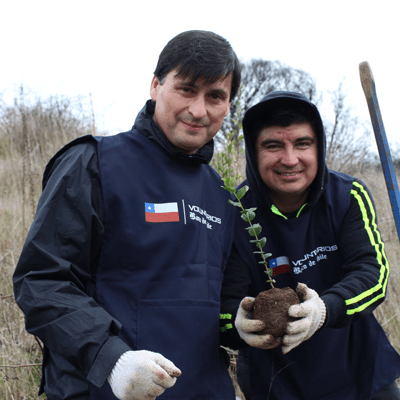
Reforestemos Chile Nativo: San Nicolás, Región de Ñuble

Reforestemos Chile Nativo: Pumanque , Región de O'Higgins
It was the first time that Cultiva carried out a reforestation project in another region. It was part of the Reforestemos Chile Nativo campaign (Let’s reforest Chile) in the territories of the Pumanque district that were affected by the wildfires in 2017. It was a collaborative project between the Municipality of Pumanque, Sodimac, Parque Met and the AIEP Institute. More than 270 students from the Pumanque district and AIEP participated in this project. It lasted for 3 days and more than 2090 native trees were planted.
| Participants | 270 |
| Native Trees | 2092 |
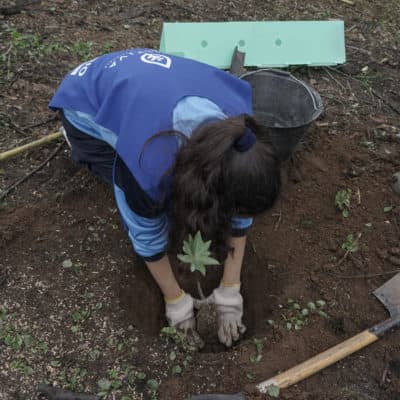
Reforestemos Chile Nativo: Pumanque , Región de O'Higgins

Casa “Mi Club” Fundación Domingo Savio- La Granja
Location: This is an educational establishment that is open to the community. Its purpose is to invite children and young people to participle in workshops and afterschool programs.
Process: We created a space for dialogue and participatory design to make a proposal for this project.
Intervention: We planted different species of native trees and built food gardens. We also created a ludic space for readers, improved a terrace, installed benches and painted furniture.
Final Participative Activity: To finish our project, we met with 70 volunteers of the Gespania Company and the community of Domingo Savio foundation.
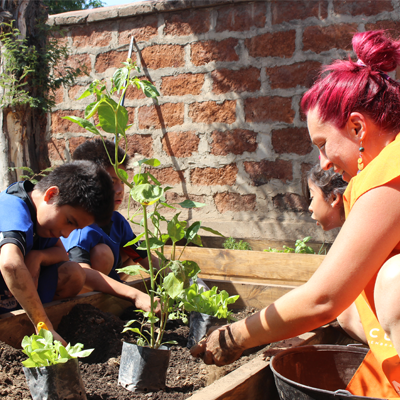
Casa “Mi Club” Fundación Domingo Savio- La Granja

Bella Esperanza Special School- Quilicura
Location: A school for students who have special educational needs due to learning difficulties such as Down syndrome or autism spectrum disorder. This is an arts-focused school.
Process: For this project, we created a space for dialogue and participatory design to understand their needs, dynamics and solutions.
Intervention: We improved the accessibility of paths and food gardens, and we installed benches, a composting bin, a wooden modular play system, a sandpit, picnic tables with umbrellas and sunshades. We also planted native bushes.
Final Participative Activity: To finish our project, we met with 70 volunteers of Bank of Chile and the educational community. During this activity, they planted trees, built food gardens and painted garden features.
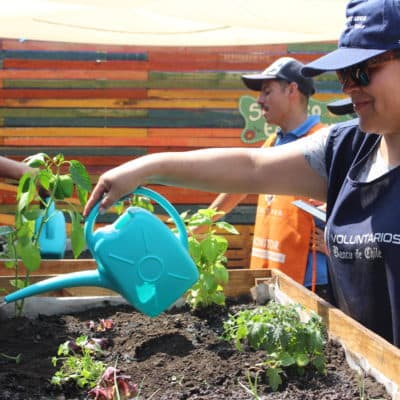
Bella Esperanza Special School- Quilicura

The Ronald McDonald Family Room of the Sotero del Rio Hospital, Sonrisólogos (Smile therapy) Space – Puente Alto
Location: Both places were chosen for their location and because of the good quality services and treatments that they offer to the patients of the hospital. In the case of the Ronald McDonald Family Room, the project aimed to create a homely space for people to rest and stay with their children while they receive medical treatment. As for Sonrisologos (smile therapy) Space, it is a place where people’s laughter, smiles and emotions are the key to improving the welfare and health of the hospital’s community.
Process: For both projects, we created a dialogue space and participatory design activities to understand and come up with solutions for their needs, and dynamics.
Intervention: Ronald McDonalds Family Room: We improve their green spaces and built a medicinal plant garden. Sonrisólogos Space: We built pergolas and a compost bin for the community, as well as picnic tables and benches. We also improved and built food gardens, and planted trees and climbing plants.
Final Participative Activity: To finish our project, we met with 50 volunteers of Bank of Chile and Sonrisólogos space. During this activity, they planted trees, built food gardens and painted garden furniture
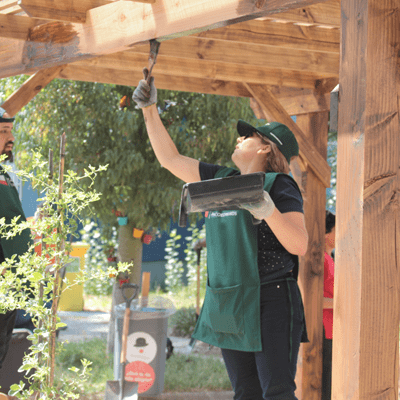
The Ronald McDonald Family Room of the Sotero del Rio Hospital, Sonrisólogos (Smile therapy) Space – Puente Alto

Rehue Centre- Renca
The Rehue center is a day center for people with disabilities. It is located in the district of Renca. It also has recreational activities for the elderly and a physical therapy program.
We had participatory design meetings with members of the community to know how to organize the center. The design was funded and approved by the Bank of Chile and included pergolas, a compost bin, an improvement of the greenhouse and roads.
Intervention: We improved their greenhouse and gardens, and installed compost bins, accessible picnic table, and forestation of native trees and succulents.
Final Participative Activity: to finish our project, we met with more than 130 volunteers of the Bank of Chile and the community of the Rehue Center. They participated in all activities included in this project, including forestation and painting.
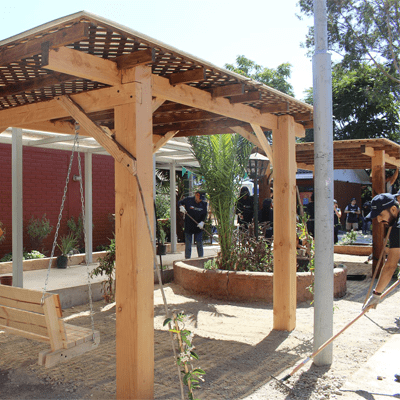
Rehue Centre- Renca

Urban Forest Quilicura
It was a project funded by a Carbon Offset Program. It aimed to transform a municipal vacant lot into an urban forest at the foot the Colorado Hill, in Quilicura.
During 3 days, students and part of the community worked on a participatory reforestation. There was a clean-up day and also people made trails and installed educational and informative signs.
| Participants | 279 |
| Native trees | 400 |
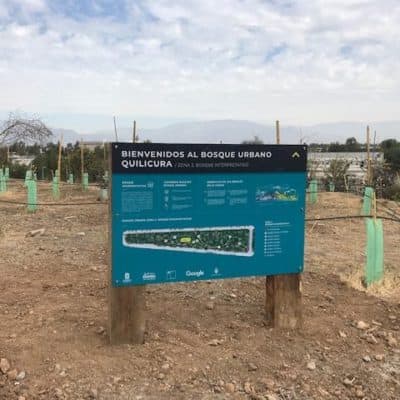
Urban Forest Quilicura

Urban forest in La Peña community, Coronel
It was a project that aimed to improve La Plaza de la Peña (La Peña square), in Coronel. More than 1.000 native trees and bushes were planted by more than 300 active volunteers of the community.
This project was funded by Parque Arauco. It was a very important experience for Cultiva and the people who participated in this activity because we were able to contribute to the improvement of the district. This project was carried out in an environmental sacrifice zone, in a district that has severe environmental problems. We hope to keep contributing to this community.
| Participants | 326 |
| Trees, shrubs and plants | 1062 |
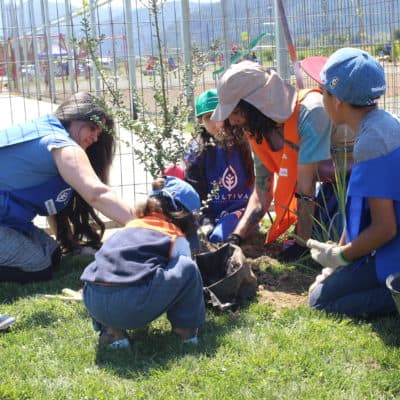
Urban forest in La Peña community, Coronel

Environmental Education Trail, Colorado Hill
It was a project funded by Google Community Grants to design and create an environmental educational trail in Colorado Hill.
This project created an open space for the educational community and people in general. Across the trail, there are 5 marked stations with information. As part of the construction of this project, 217 students from Quilicura and Renca planted native trees along the trail. The marked stations are: Water, Air, Earth, Fire, and Life. Each one of them conveys information about this hill and its relation to those elements. Also, there are activities and reflection questions, QR codes with additional information and a link to download an educational activity book from Cultiva’s website.
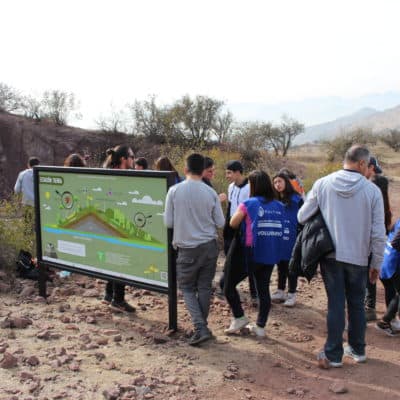
Environmental Education Trail, Colorado Hill

Reforestation as learning
Reforestations are carried out in different contexts, therefore each project and experience are different. However, from the educational project and its programs we value reforestation as an outdoor learning experience imbued with sensations, reflections and actions. The participatory reforestation that we carry out with schools has an education program that includes a workshop and a reforestation activity on the field.
The workshop aims to get to know the group, talk about environmental issues and plant one or two trees in the school. This allows the groups to reflect and know about the climate crisis and benefits of native forest, observation of species and how to plant them.
During the morning of the field experience day, the collaborative groups plant native trees.
| Participating schools | more than 150 |
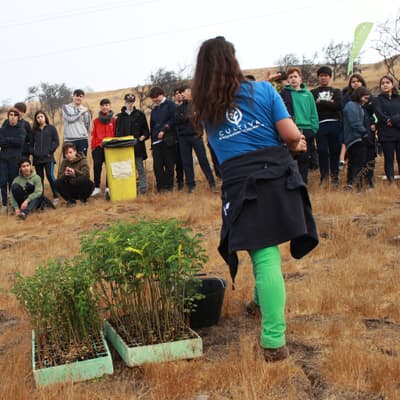
Reforestation as learning

Clean up and Recycling Activities
Clean-up days are environmental actions of great educational value. The program includes a workshop in the classroom and a clean-up day on the field, outside school. During the first part, it is encouraged to talk and reflect about waste and how to be responsible for it. There are conversations, reflections, questions and answers. On the field, participants are given the opportunity to reconnect with their natural surroundings and raise awareness about the environmental waste problem.
In the morning, the groups walk through the area picking up waste. Later on, waste is taken to a recycling center and the participants learn about recycling materials.
If I clean up a place, I'll think twice before littering again!!
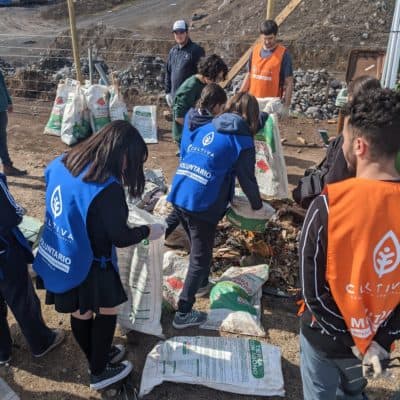
Clean up and Recycling Activities

Discussion Groups
Cultiva hasn’t focused on discussion groups because we strongly believe that an activity has to be accompanied by a concrete action. To achieve their objective, the participants must put their effort, move their bodies and use tools at their disposal.
However, due to the high demand for this type of activity, we have reconsidered and looked for the best way to respond to it. Discussion groups aim to make people reflect and commit about what they learn. When people learn something new, they are responsible for it and they become part of the solution. In this way, and depending on the topic of our discussion group, we come up with something else for our audience. There are different topics in our discussion groups, but they are focused on reforestation, the value of native forests, and climate change. Our objective is to create a learning space, where people can learn about environmental issues and make concrete commitments to them.
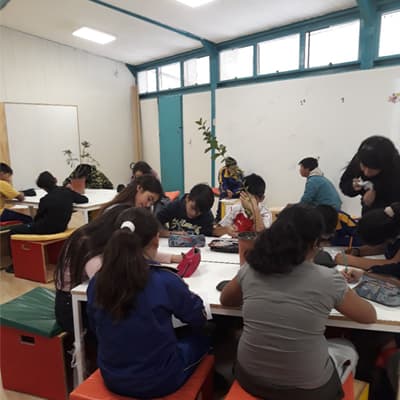
Discussion Groups



